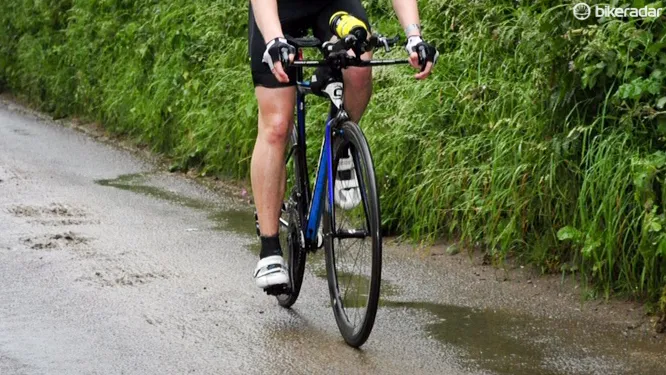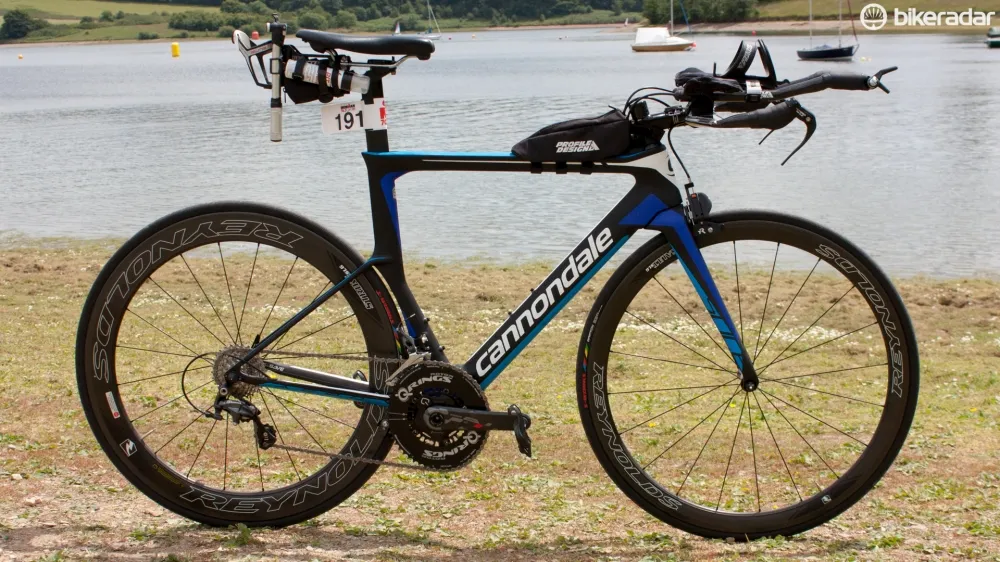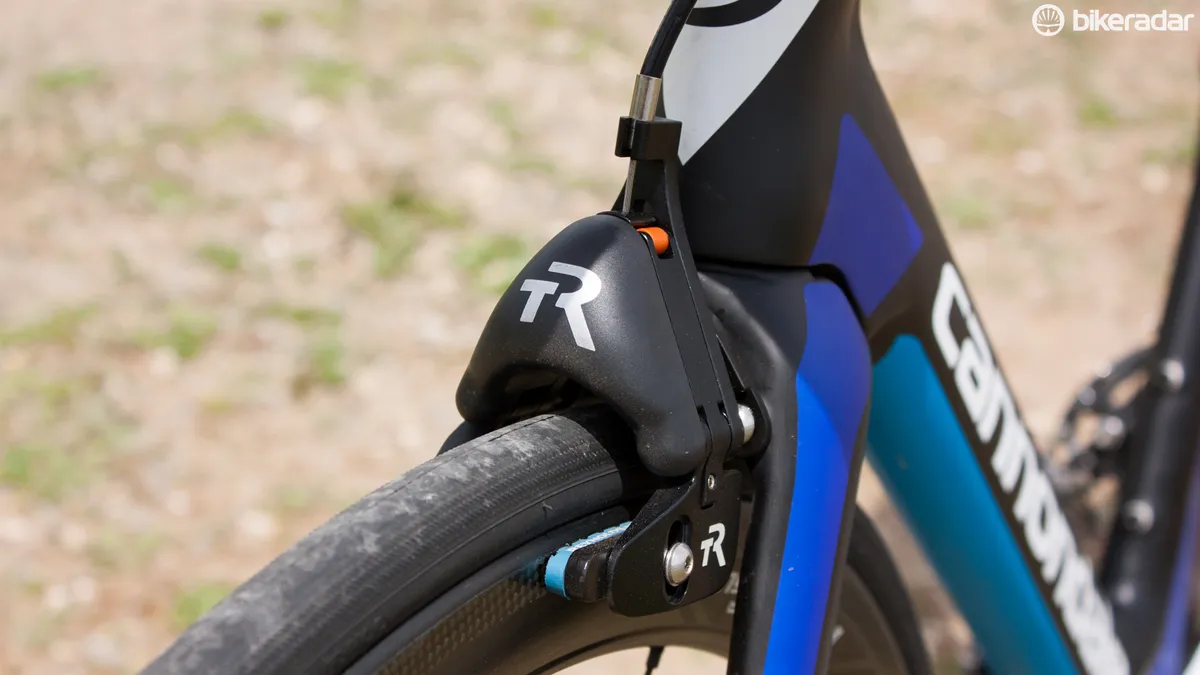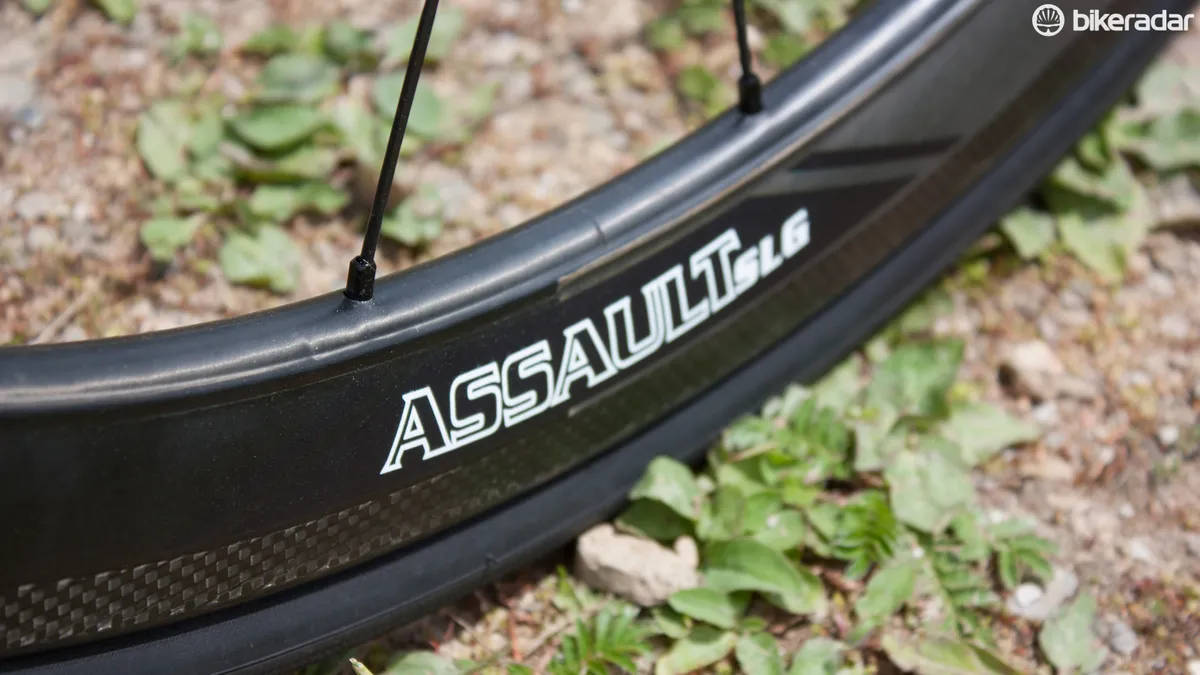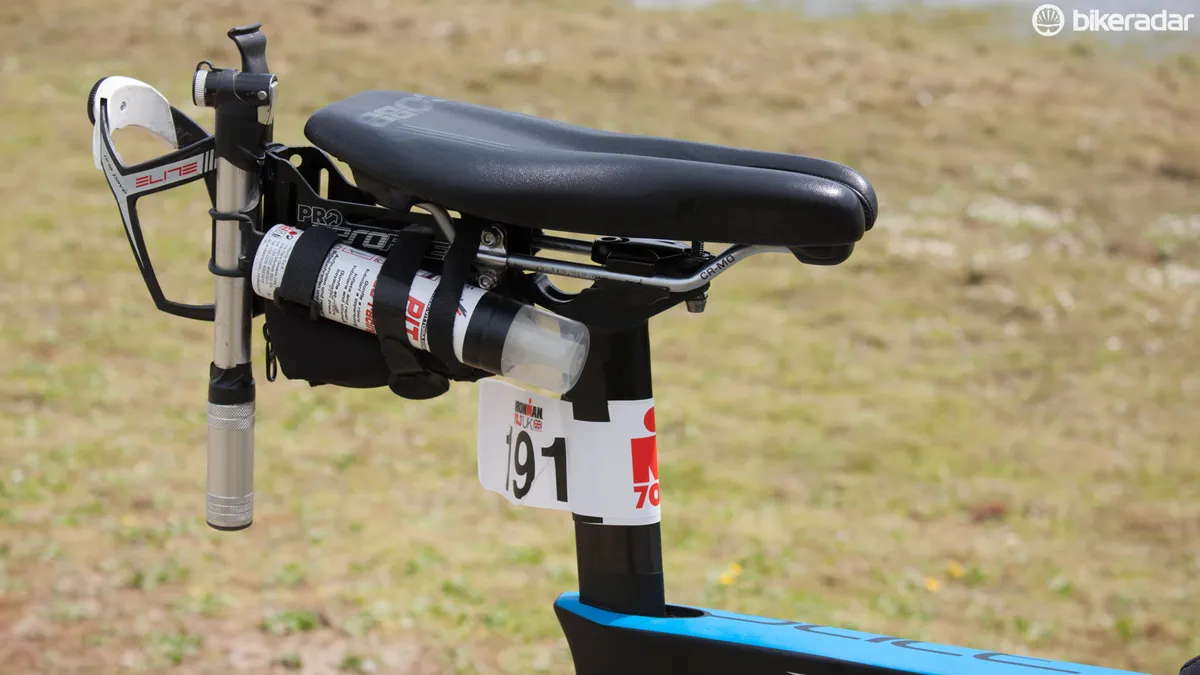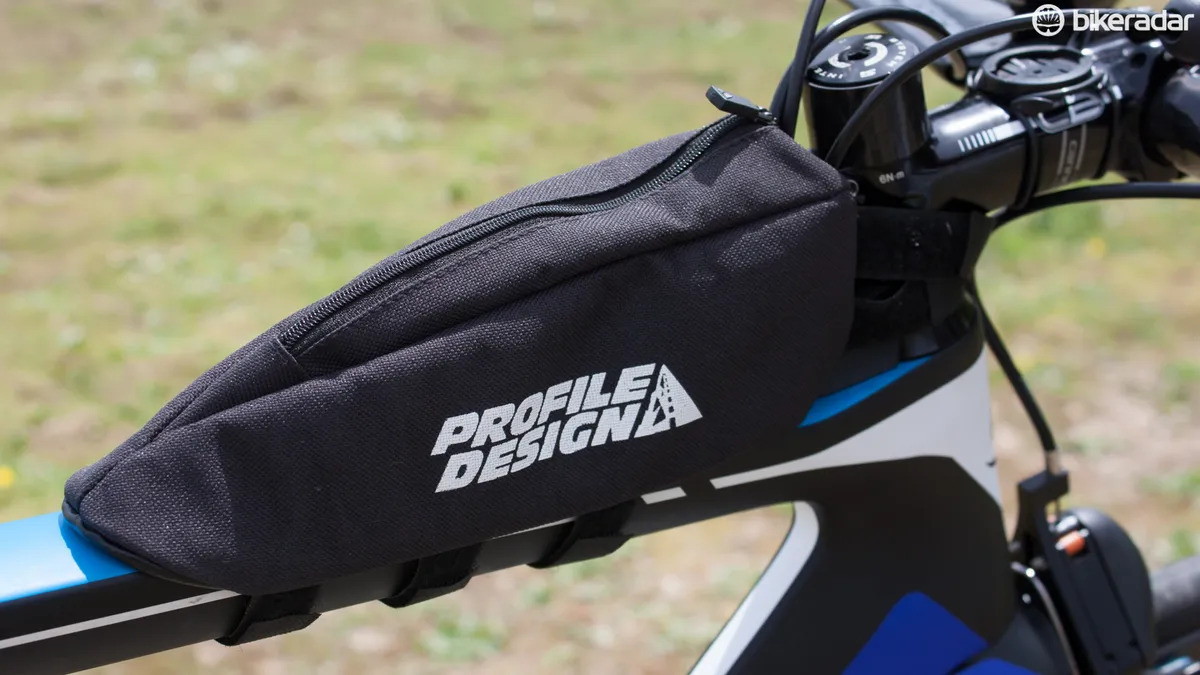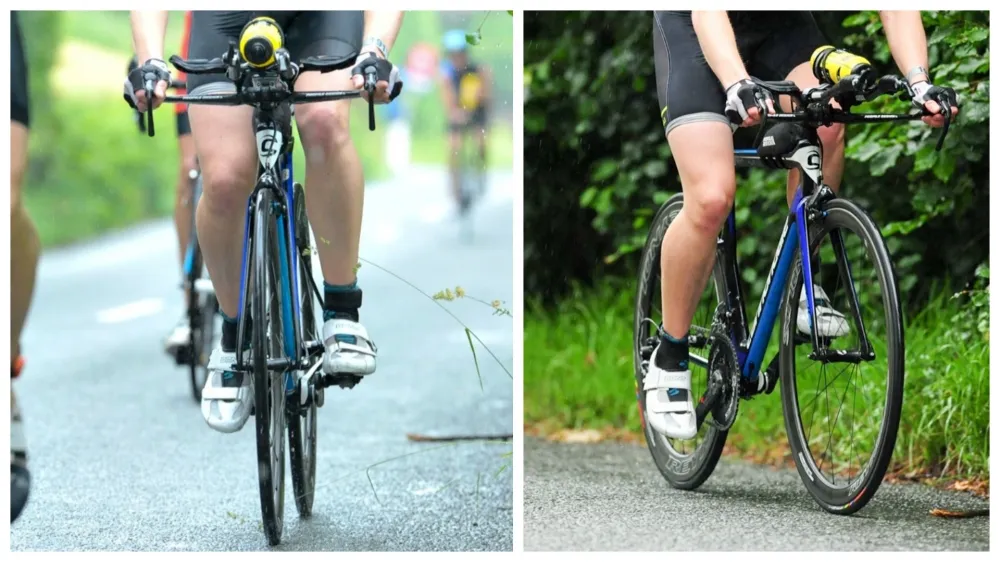Having had plenty of time to get used to Cannondale’s newest Slice TT bike, it was time for its final exam. In a test tailor made for the lightweight tri bike, it would be pitted against the 56 miles and 1,800m of climbing at Ironman 70.3 UK Exmoor in southwest England.
The event was described as the world’s toughest 70.3 by two-time Ironman world champ Chris McCormack and the spiky profile route profile certainly backs that up with a series of steep climbs over two laps that swap leg power for lactic. Naturally, there are equally sharp downhills to contest with as well as some fast rolling sections to help get the average speed up.
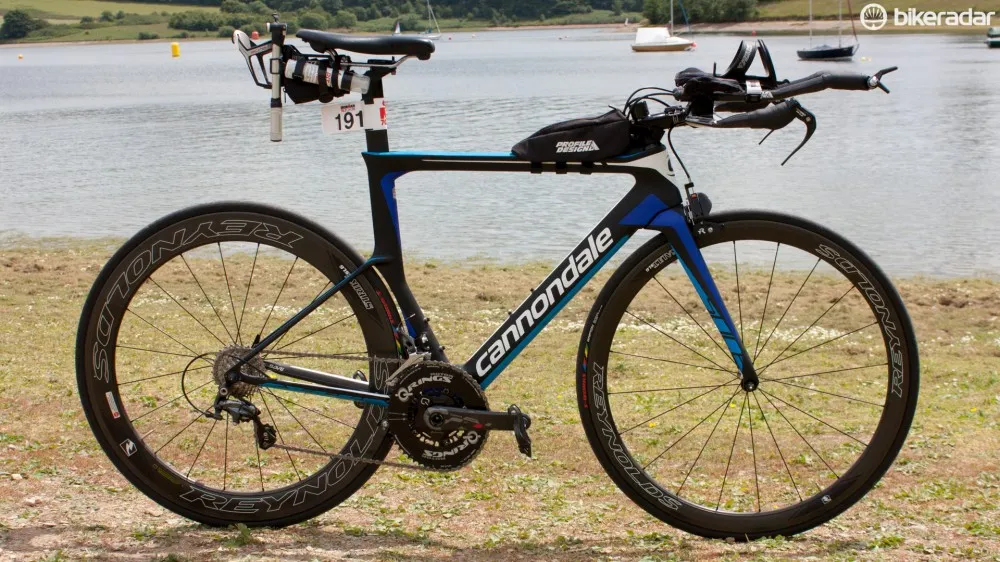
Ready to race: the Cannondale Slice with various 'one-percenter' upgrades
Being one of the lightest, most comfortable and best handling TT bikes out there, it’s a challenge ideally suited for the Slice. But as winds kicked up and rain pelted down on race morning, how would the bike fare in the real-world conditions it's designed for?
- The course: Ironman 70.3 UK – a leg-sapping, gradient-happy hill fest with 1,800m of climbing over two laps (that elevation figure differs with online maps, but three different Garmin units have put it at just over 1,800m).
- The equipment goal: a lightweight TT bike that can climb well, remain comfy and handle confidently in the poorest conditions.
- The horse: A 2015 Cannondale Slice Ultegra 6800 with TriRig Omega X front brake; Reynolds Assault / Strike wheelset; Specialized Turbo tyres; Profile Aeria Carbon bars; Quarq SRAM Red 22 power meter with 52/36t Q-Rings; Cobb JOF saddle.
Race day would mark my fifth time taking on the route – or ninth and 10th laps counting it that way – so I knew exactly what was in store. I also had the 2013 event’s crap weather to compare to this year’s really crap weather. At least the swim meant I was going to be wet whatever happened when mounting the Slice.
The bike course drops back to the lakeside before the first hill. This shouldn’t have been notable except for the fact that the very first bump in the road after leaving transition sent my saddlebag skittering away behind me with no hope of recovery on the athlete-thronged road. I hoped the Specialized Turbo tyres were up to scratch, or rather, that no scratches would test them over the next 56 miles. This early catastrophe also meant a wonky rear bottle cage that made getting the bottle back in a real pain in the behind. Why couldn't I have just used a regular tube-mounted bottle cage? Because, you know, aero.
The road pulls up and away from the lake at a relatively peaceful grade that still means out-the-saddle grinding for many who didn’t pack a 28t cassette at the back. That very cog, along with my 36t ovalised Q-Ring, meant an easy enough time to allow the heart rate to settle a little. The Slice felt stiffly stable and totally in control despite the waterlogged roads.

The Slice's practical nature made it ideal for real-world rain
After a swift down and steep up – the bike’s lightness helping to avoid too much of a drop in cadence – it was onto the fast rolling section. Dropping into race pace, the Slice was the least of my worries as crosswinds threatened in every hedgerow gap and rain battered down, making visibility an issue. The Slice proved adept at shrugging off the blustery gale, its TAP (truncated aero profile) tubes giving little for the wind to push against, which definitely helped ease the nerves and maintain a semblance of comfort despite the downpour. The bike also held its momentum superbly; its aerodynamics and lighter weight sending me fast downhill and quickly up onto the next rolling rise.
The combination of TriRig Omega X front and Shimano Ultegra direct-mount rear brakes was a winner even with carbon rims in the wet. This was proven by the one technical descent, which curves swiftly down a hillside to end in an almost 180-degree left turn. The power of both brakes is to be applauded while the strength of the TriRig is especially impressive given its minimal weight and aero-centric design. The centre-pull brake had been easy to adjust before the event too. The Tektro brake levers specced here have a wider profile than Shimano's and aided a good grip with numbing hands.
Following a fast flattish section, the road kicks up imposingly for one of three significant climbs. Not too long, but with plenty of steepness to overcome, it tested the Slice’s back end, which remained true with no brake rubbing – the less said about the contrast to many other riders’ bikes the better. (But seriously guys, didn't you check before riding?!) With the Slice, we’re not talking the kind of sprint-away stiffness offered by a true climber’s road bike, but it certainly holds its own against aero road bike competition and is right up there in TT bike terms, but without foregoing too much comfort.
As the climbing continued, the front end was challenged by out of the saddle efforts. The stiff Profile Aeria carbon bars helped the Slice hold its line, the bike coping admirably with hamfisted rocking of the bars – and that’s with a full bottle between them. Being a mechanical group, gear changing isn’t as easy as would be ideal, but that’s reflected in the price of the stock bike.
Once over the last big climb, where even in such awful weather the crowds were showing their support, it’s false flat / gradual uphill for the last few miles of the loop. The Quarq was telling me that while it looked easy, I was putting down quite enough power despite the slower speeds, so it was back into a comfortable aero position to pace my efforts carefully until the end of the lap.

The TriRig Omega X is a fantastic upgrade if you've got a front-mounted brake on your TT bike
The beauty / tragedy of a lapped course is that you get to experience the literal and emotional highs and lows all over again. The beauty came in form of the countryside, which was stunning despite the wet weather and the fact that every pedal stroke was one closer to transition. The tragedy was in the hills, which seemed longer and tougher and the fact that every pedal stroke was one closer to transition – and the half marathon that would follow.
The Slice behaved just as well second time around, even if its engine wasn’t quite as powerful. It might’ve been launched in Kona, but it’s really a bike perfectly suited to hilly time trials and triathlons. Slap on a lightweight climbing wheelset such as Mavic’s R-SYS SLR and it’d be ideal for the likes of Ironman Nice or the Alpe d’Huez triathlon.
While the hills might uncover the bike’s most obvious gains, its stiffness and light weight serving to lessen climbing intensity, all the real-world riding has shown it to be a really fast bike all round. It led me to a 3:12:16 bike split, which while not too impressive in itself, was the fastest time I’d ever done there despite the atrocious rain. For those who care about such things, the Slice also got me to transition in enough comfort to let me knock 10-minutes off my best run there too. In horse for course terms, it was certainly a perfect fit.
Check out more Horse for the Course features on BikeRadar.
